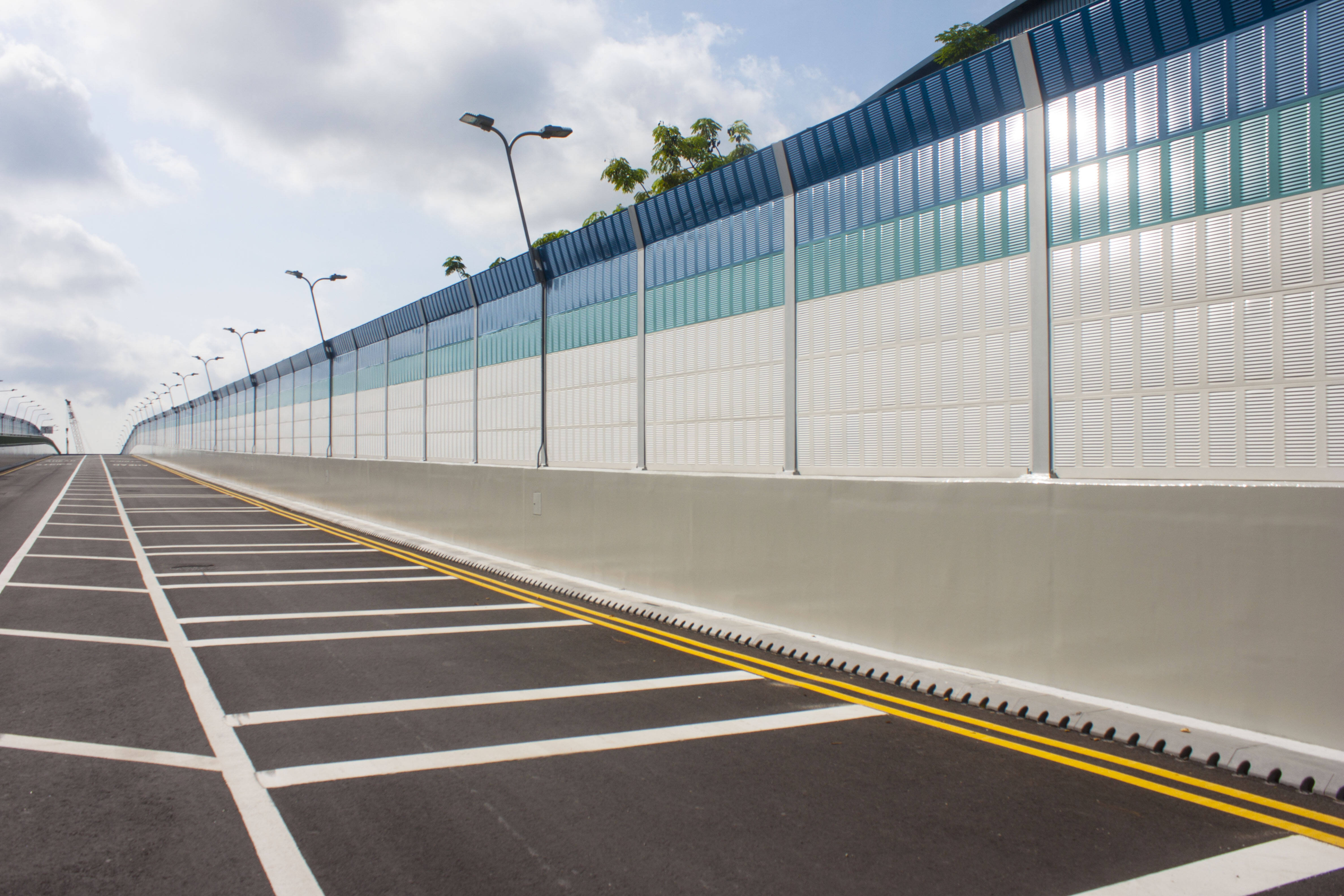What Type of Noise Barrier is Best for Highways?
Highways face unique challenges: heavy traffic flow, strong noise levels (65–85 dB), complex outdoor environments, and strict durability requirements. Choosing the right type of noise barrier is key to ensuring both noise reduction and long-term performance. Here are the top recommendations:

1. Metal Noise Barriers – First Choice for Durability
Metal noise barriers, especially galvanized steel and aluminum panels, are the preferred option for highways:
-
Long lifespan – 15–20 years with anti-corrosion treatment, much longer than wood or plastic.
-
High strength – Withstand wind loads of 0.5–1.2 kPa and resist stone impact.
-
Easy installation & maintenance – Modular panels (15–30 kg each) allow fast assembly, while maintenance only requires 1–2 cleanings per year.
-
Effective sound insulation – Perforated galvanized steel panels can reduce noise by 20–25 dB, ideal for main highway sections. Aluminum barriers are especially suitable for coastal or rainy regions.
2. Curved & Folded Plate Designs – Better Acoustic Performance
Compared to traditional vertical barriers, curved or folded plate structures offer superior results:
-
Improved noise reduction – Curved designs reflect and converge sound waves, reducing noise by an extra 3–5 dB, particularly effective for truck low-frequency noise.
-
Flexible for complex roads – Folded plate barriers adjust to slopes and curves, preventing noise “blind spots”.
-
Safer structure – Curved tops help reduce vehicle collision impact, while the solid foundation provides stability (anti-overturning factor ≥1.5).
3. Glass Composite Barriers for Sensitive Areas
In residential or school zones near highways, metal + laminated glass composite barriers are highly recommended:
-
Lower section – Metal panels ensure strong noise blocking and impact resistance.
-
Upper section – Laminated glass with ≥70% light transmittance provides natural lighting without blocking views.
-
Balanced design – Keeps noise control, safety, and environmental harmony in one solution.

